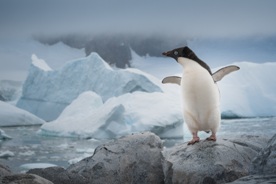The Glenzer-Conger Glacier collapsed in East Antarctica, an area long considered stable and not greatly affected by climate change.
The Glenzer-Conger ice shelf, half the size of Moscow, collapsed in East Antarctica, an area that had long been considered stable and not greatly affected by climate change, experts from the Woods Hole Oceanographic Institution (USA) reported. According to scientists, this kind of event has never happened before in this part of the continent. The collapse, captured on satellite imagery, marked the first time in human history that an ice shelf collapsed in this frigid region of Antarctica.
In mid-March this year, air currents brought a lot of warm air and precipitation in the form of rain instead of snow to parts of East Antarctica, causing air temperatures in this part of the Ice Continent to be more than 18°C above normal. Scientists suggest that such unusual warming and glacier collapse are related.
In December 2021, scientists warned of dramatic changes in one of Antarctica’s largest glaciers, the Thwaites, reports the BBC. The fact is that its floating part, the ice shelf, is covered with cracks, and its destruction can provoke a significant rise in sea level, and experts say that this will happen within about 5 years. Scientists reported the grim results of the study at a meeting of the American Geophysical Union. The Thwaites Glacier extends 120 kilometers along the western coast of Antarctica, the width of its floating part is 45 kilometers. Meltwater from this glacier is already responsible for about 4% of global sea level rise.
Thwaites – A floating ice shelf is stabilized on the shelf by shallow sea water and acts as a dam, slowing the flow of ice from the continent to the ocean. If it breaks apart, melting will accelerate and its contribution to sea level rise will increase by as much as 25%.





